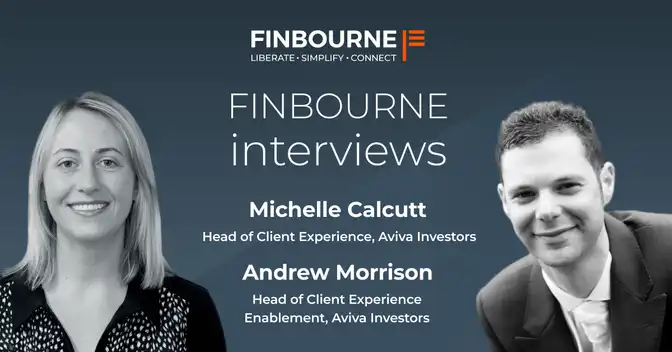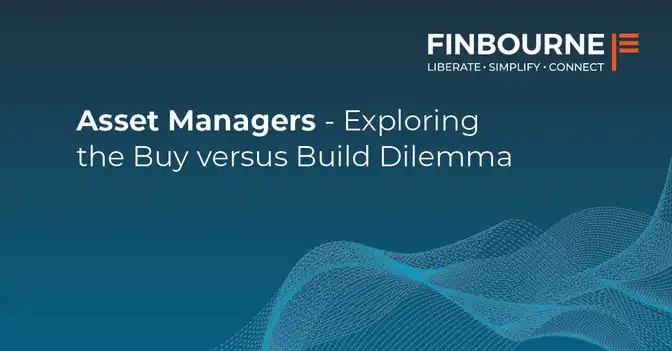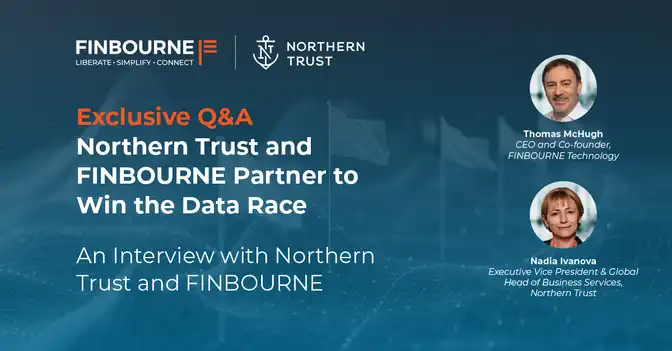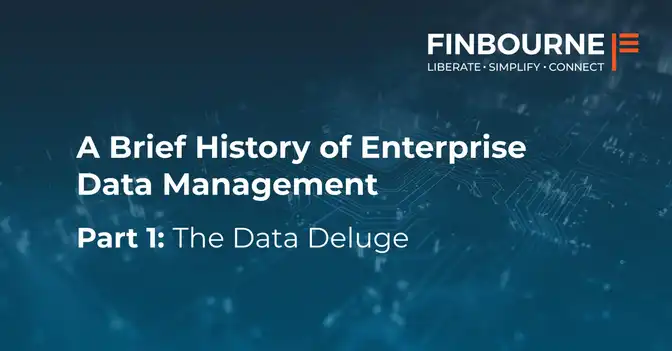In this interview, Gus Sekhon, our head of product, sits down with Aviva Investors’ Michelle Calcutt and Andrew Morrison to talk all things customer experience related. Michelle heads up the client experience team at Aviva Investors and is responsible for the end-to-end client journey, the interactions they have and how to improve this. Andrew is head of client experience enablement and is focused on delivering this change. Our discussion was inspired by a recent Aviva Investors whitepaper – The CX Factor.
We discuss the areas where asset management has historically not met client demands, how this is changing today, the lessons the industry can learn from Amazon and why process and governance are the first things to get right, not technology when looking at data strategy.
Gus: What does client experience mean to you?
Michelle: Client experience is the client’s overall perception of our firm. If you want to deliver a good client experience, it’s about understanding all the touchpoints, as no interaction is out of scope when clients form a view. Touch points in a customer journey mean different things to different people. In asset management, onboarding and reporting are common areas of pain for clients. But the essence of client experience for us – whilst we may deep dive into areas of improvement – is understanding how these touchpoints resonate differently with those that have a different role to play within each organisation.
Historically, the industry made assumptions and separated the world into institutional versus wholesale investors and decided which services those two groups would receive. That was too broad a way of looking at those channels given the different types of institutions within them, the wide variety of roles that exist in client organisations, and how individuals in those roles wanted to engage. Ultimately, a good client experience is about understanding what various individuals within these organisations need from us to help them do their job. For example, an administrator may be more interested in the service element of the journey as that’s where their role is focused. A chief investment officer would be more interested in asset allocation and making decisions at the front end.
Gus: In your report, one of the obstacles to better customer experience is real time performance updates. What does that look like and what is the obstacle?
Michelle: We’re moving to a world where real time information is inevitable. We use data internally all the time to make decisions on clients’ portfolios. But we must ensure that our clients understand what we’re sharing, why we are sharing it and what the data is telling them. You don’t want to release information that can be misinterpreted. There are lots of considerations and quality checks we go through when releasing information. It all comes back to ensuring we provide our clients with the right data points.
Gus: Your whitepaper discusses creating a seamless client experience. What role does technology have to play in that?
Michelle: Pre-Covid, I would have said we were on a journey that recognised the essence of digital and what it brings, but were aware there would be different adoption rates across our client base and we had to design principally for both digitally savvy and those who prefer predominantly face-to-face engagement. The pandemic has accelerated the maturity levels in some respects; we’re seeing individuals who previously didn’t embrace technology have to do so today. Now, whilst we still see different levels of adoption maturities, we have probably brought that forward a number of years. When you look at what a client needs – ease of access to information, being able to self-serve to some extent but having contextualisation around it — technology is an obvious answer to those needs. But I can’t see asset management becoming 100 per cent digital. Face-to-face interaction in the engagement model will remain key but there will be a greater level of digital.
Andrew: A specific example for us is pitch books. We’ve spent a lot of time ensuring the message a client receives in a pitch flows all the way through so client reporting tells the same story. We implemented a data lake to allow us to have a single source of information that feeds pitch books and client reporting.
Gus: Can you tell us a little bit about your data lake and how it works?
Michelle: It’s a way for us to access data points from all of our systems and pull that data together so we provide value-add information to our clients. At its heart, it’s about having structured and unstructured data with the right governance in place so we can slice and dice data for clients.
Andrew: As opposed to just dumping data into the lake, we approach it on a needs-based approach. We identify the data points required, reconfirm the governance process required and there is a check before the data goes in. By having a centralised governance approach, it means the various data owners authorise the data to be used in the ways stated. With investment data for example, you could think a data point is telling you one thing when actually it’s telling you another.
Gus: How do you control what or who the consumers are of the data once it’s in the data lake?
Michelle: Data is incredibly powerful but can be dangerous if not used in the right way. If you don’t ask the right questions to the right data set it can be extremely misleading. Having the governance in place, not just for data quality but to ensure it’s the right data point for what you’re trying to answer, is at the heart of this.
Andrew: When someone doesn’t get the answer they want, they tend to lose faith in the data. In fact, it’s the governance process that should sit on top to ensure you pick the right data points in the first place.
Gus: In your whitepaper, you discuss how onboarding delays are a frequent bugbear for clients across the industry. How did you improve this experience?
Andrew: We established an onboarding team to lead complex onboardings, with experts from across the industry who understood operating models and how to navigate across the company for legal information, tax implications and so on. Building this centre of excellence has made a massive difference. It hasn’t necessarily sped the process up, but it has made the interactions with clients much more purposeful and stopped a lot of the back and forth. We also reduced our onboarding time significantly for pooled investments, moving from 18 weeks on average and eight interactions, to three weeks and two to three interactions.
We applied a risk-based approach as opposed to a process-driven approach and were prescriptive on the data required and when we needed it. What’s interesting in both these examples is the time to onboard wasn’t the frustration, rather it was the number of interactions. That’s where understanding what drives client satisfaction really comes into play.
Gus: How do you see the role of technology in building an interactive reporting experience?
Michelle: The best technology in the world isn’t any good if you don’t have the right processes behind it. It can certainly be a core driver and enhance the client experience but if you don’t have the right governance, processes and adoption, whether that is through internal use as to how you produce pitch books or adoption of a solution you’re asking clients to use on a day to day basis, it will fail. With interactive reporting for example, a lot of our client have third parties that want to consume information in different ways. Being able to be interactive and slice and dice as you want it is a huge step forward.
Gus: What do you think asset management can learn from other industries?
Michelle: Asset management has traditionally been very product led and we’re all grappling to become more client led. Regulation has done a lot in this regard, but there is a higher expectation from our clients. How do we use data to better understand our clients’ needs and motivations? As an industry, we hold a lot of information about our clients through talking to them and the ways we interact. We’ll only get to what we’re all thriving for – a more personalised experience – if we use that information more effectively and learn from other industries.
Whether in b2b or b2c industries, people expect to feel that you know what they want. We have to learn from consumer technologies like Amazon. Just because our industry may be a little behind technology-adoption wise, the clients within asset management still live in the same world and their expectations are gradually changing.
Gus: How are your clients changing? Are you seeing a shift in what they want in terms of risk and reporting and the products they look at?
Michelle: We’re seeing a convergence between client types, with a growing appetite for different information and more transparency. Regulation has done a lot to change how we interact with clients too. We’re seeing greater interest in ESG data, and this will likely continue with new regulations coming into play soon.
As an industry, we are becoming more institutionalised – more sophisticated in our thinking, more transparent with the data we have and the questions that are asked. We are shifting from selling products to selling solutions. This is driven from a client perspective and what they are trying to achieve rather than a ‘what products do I have that I can sell’, which was an industry wide problem. Operational resilience and the value our clients place on that has also become even more important during the pandemic.
Andrew: Covid was a crisis so quarterly reporting went out of the window as it does in any crisis. How close to this real time reporting can you get so a client can log in to understand what their exposure is to rather than having to make a request? That comes back to giving access to information on a fair and consistent basis.
Gus: To wrap up, do you think the last few months have changed how asset managers will engage with clients in the long term?
Michelle: This whole experience (Covid) has brought out a lot of empathy. Previously, clients have made decisions with black and white information in front of them. I think we will see a shift as trust becomes a more prominent part of a client’s decision making.




